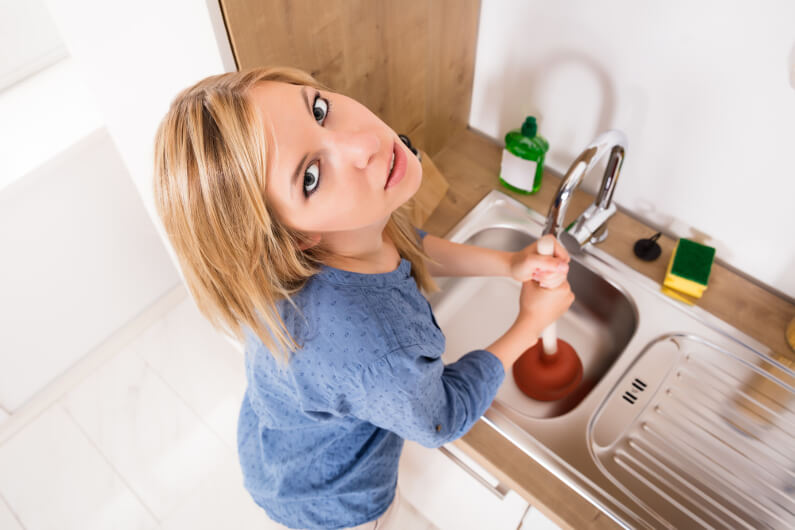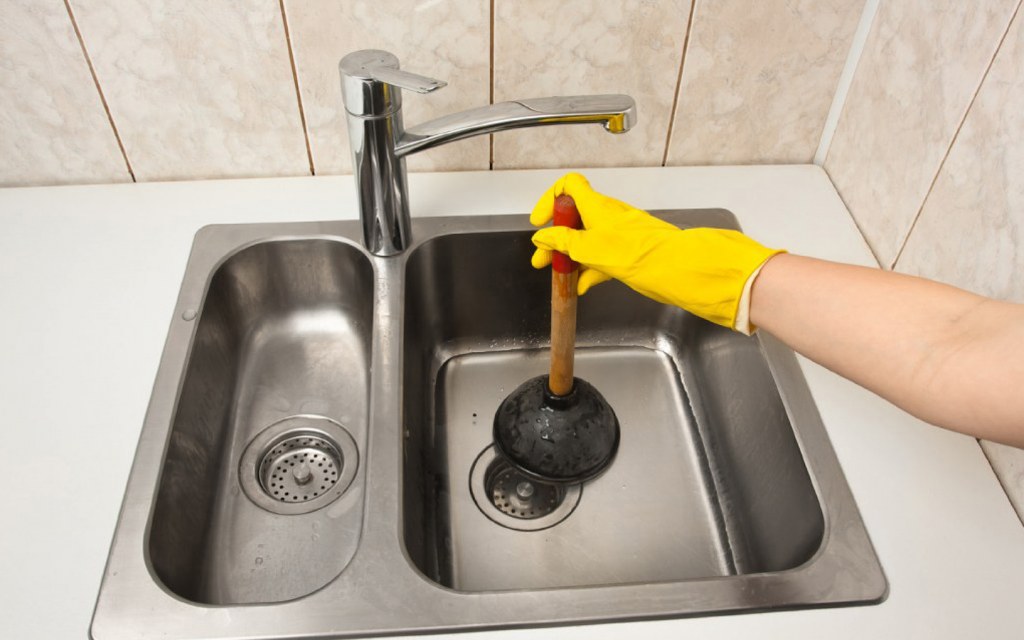They are making a few good points about What To Do When Your Kitchen Sink Won’t Drain in general in the article on the next paragraphs.

It's not regular for your kitchen area sink to congest multiple times in one month. If your sink obstructs twice a week, there's some trouble taking place.
An obstructed kitchen drainpipe doesn't simply decrease your chores, it deteriorates your entire plumbing system, gradually. Right here are some typical routines that motivate sink blockages, and also exactly how to avoid them.
You require appropriate garbage disposal
Recycling waste is great, but do you take notice of your organic waste too? Your cooking area ought to have 2 separate waste boxes; one for recyclable plastics as well as another for natural waste, which can become compost.
Having actually a designated trash bag will certainly help you as well as your family members avoid throwing pasta and also other food residues down the drain. Typically, these residues soak up moisture as well as come to be blockages.
The fault isn't from your kitchen area sink whatsoever
Possibly the issue isn't from your cooking area sink, but the whole water drainage system. In such a case, you might notice that other sinks and also drains obtain blocked every other week. You require a professional plumbing service to fix this.
You're tossing coffee down the drain
Utilized coffee grounds and coffee beans still take in a significant amount of wetness. They might seem little enough to throw down the drain, but as time goes on they start to swell as well as occupy more area.
Your coffee premises need to enter into natural waste disposal. Whatever fraction gets away (perhaps while you're washing up) will certainly be looked after during your regular monthly cleaning.
You have actually been eating a lot of greasy foods
Your kitchen area sink might still obtain obstructed even with organic waste disposal. This may be since you have a diet plan abundant in oily foods like cheeseburgers.
This oil layers the insides of pipes, making them narrower and more clog-prone.
Utilize a bettor
- 1. Block the sink's overflow opening with a tiny dustcloth.
- 2. Position your cup-shaped sink bettor-- not a toilet bettor, which has a flange for securing a toilet's outlet-- over the sink drain.
- 3. Fill the container with adequate water to cover the bettor's mug.
- 4. Currently dive backwards and forwards basically, fast activities to compel as much air as feasible down right into the drainpipe.
- 5. If the obstruction displaces, you need to see the water in the sink swiftly drain away.
Your pipe wasn't fixed effectively to begin with
If you've been doing none of the above, but still get normal obstructions in your kitchen area sink, you should call a plumber. There might be a problem with just how your pipelines were set up.
While your plumber arrives, look for any kind of leaks or abnormalities around your kitchen area pipes. Don't try to take care of the pipes yourself. This might trigger an accident or a cooking area flooding.
Somebody tried to clean their hair in the kitchen area sink
There's a right time and also location for everything. The kitchen sink is just not the right area to clean your hair. Washing your hair in the cooking area sink will certainly make it clog eventually unless you use a drainpipe catcher.
While a drainpipe catcher might capture the majority of the fallouts, some hairs might still survive. If you have thick hair, this may suffice to reduce your drain and at some point form a clog.
There's more dirt than your pipelines can deal with
If you obtain fruits directly from a ranch, you may notice even more kitchen area dirt than other people that go shopping from a mall. You can conveniently fix this by cleansing the fruits as well as veggies effectively before bringing them right into your home.You require proper garbage disposal
My Kitchen Sink Won’t Drain - What Should I Do?
If Your Sink Has a Garbage Disposal...
- Turn on the disposal. If the disposal hums and doesn’t turn, then there’s clog in the disposal unit.
- Go to your circuit breaker panel, and switch off the circuit breaker to your garbage disposal.
- Back in your kitchen, double-check that your garbage disposal is off by trying to turn it on. The disposal should not move, and it should not make any noise.
- Lie down underneath your sink so that you can see and access the bottom of the disposal unit. Look for a hole that looks like the head of a hex-head bolt in the center of the unit.
- Place an Allen wrench inside this hole and turn it from side to side until you feel a decrease in resistance and are able to rotate the wrench completely in a single direction. This action rotates your disposal’s blade manually.
- Put the wrench aside, and press the disposal unit’s reset button or switch.
- Flip your garbage disposal’s circuit breaker switch back on, and turn on the unit to see if the obstruction has cleared. If it hasn’t, repeat the steps above until the obstruction is removed.
How to Unclog a Kitchen Sink Drain
- If you have a double bowl sink, seal one side of the sink with an airtight lid or a second plunger before plunging the other side. Otherwise, you won’t be able to create adequate suction.
- Place the cup of the plunger completely over the drain opening.
- Turn on the faucet, and let the water run until it completely covers the cup of the plunger.
- Start plunging by pushing the plunger down and pulling up again in order to build up suction. Make sure that the edges of the plunger stay in contact with your sink, or else you’ll lose the suction.
- If you have trouble forming a seal between your sink and plunger, add petroleum jelly to the mouth of your plunger, and try again.
- Plunge about five or six times before removing the plunger to see if water starts to drain properly. In some cases, you’ll even be able to feel the clog become dislodged while you plunge because suddenly there will be much less resistance. Repeat the plunging process until the clog clears.
- Once water is draining properly again, run hot water down the drain for 5 minutes to help clear away grease, grime, and debris from the clog.
https://www.plumbingjoint.com/blog/2019/august/my-kitchen-sink-won-t-drain-what-should-i-do-/

Do you really like more info about Why Is My Sink Not Draining?? Put a review below. We will be glad to hear your opinions about this post. Hoping to see you back again later on. Are you aware of somebody else who is inquisitive about the subject? Be sure share it. Thank you so much for your time invested reading it.
Free Estimate
Comments on “Why Your Kitchen Sink Remains Stagnant - 6 Key Reasons For Poor Drainage”